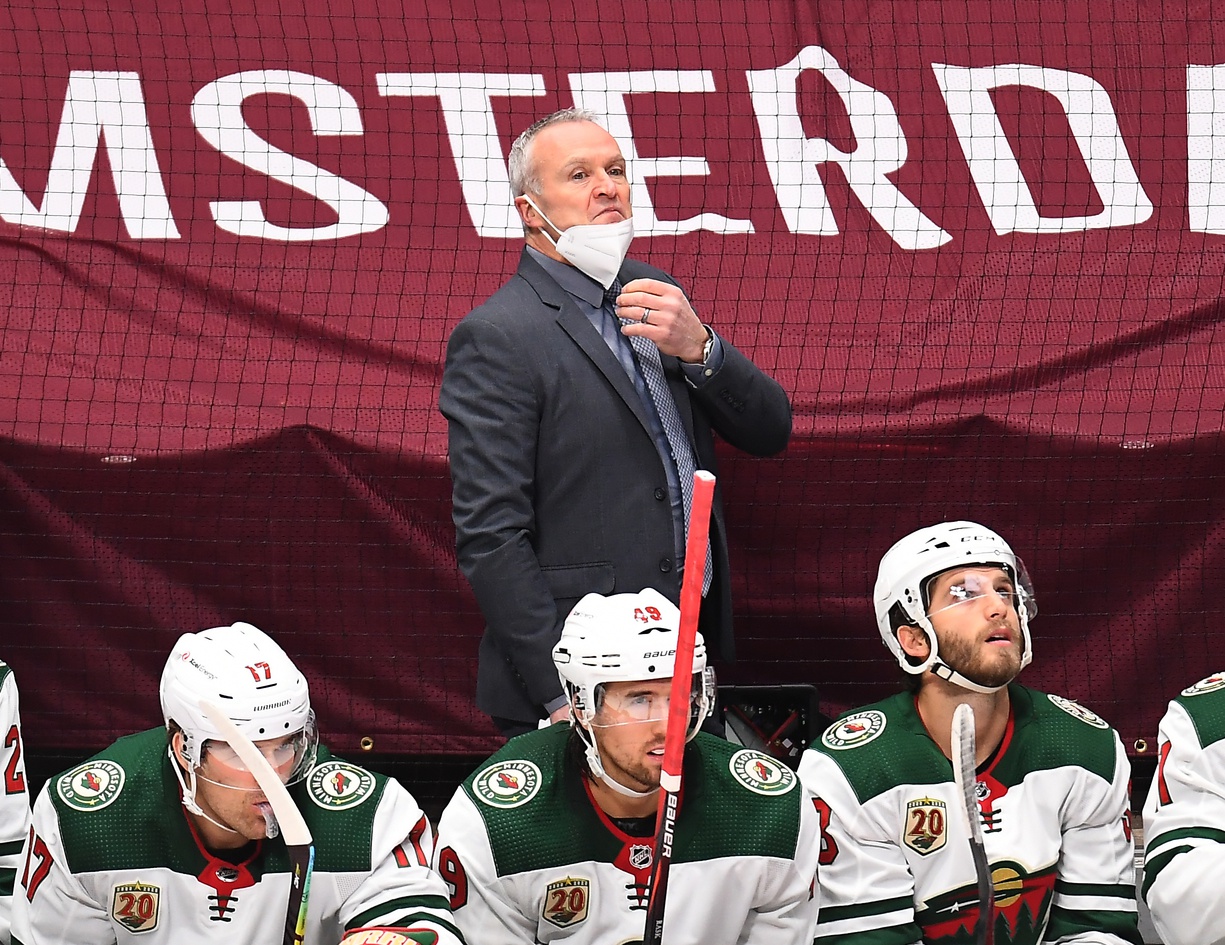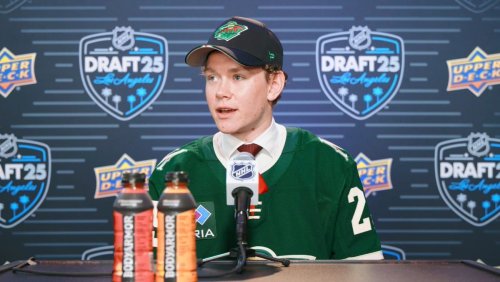
The biggest reason to tune in to the Minnesota Wild is the chance to see someone do the impossible. Usually, that’s a good thing. Maybe it’s the impossibly good shot of Kevin Fiala or the wizardry of Kirill Kaprizov.
Or perhaps it's watching a power play that is impossibly bad.
The Wild opened the season going 0-for-16 in their first three games, despite getting good looks. No big deal. Slumps happen. When Nick Bonino got a fluky power-play goal in Game 4 of the season, then Fiala notched much prettier one two games later, it looked like the floodgates might open.
If they opened, there was only a puddle behind the gates. The season’s nearly half over, and the Wild are tracking to be historically putrid on the man advantage. Over the past eight games, they’re riding an 0-for-19 streak, putting them at 5-for-74 on the season. Their 6.8% conversion rate is not only 31st in the league, but on track to be the worst of the salary cap era.
It’s not even close, either. The 2013-14 Florida Panthers had the lowest full-season power play in that span, converting at a 10.0% rate. Just four teams since 2007-08 have even been below 13%.
Coach Dean Evason has tried everything to get the power play going. He’s had Zach Parise take faceoffs. When that didn’t work, he put bottom-six center Nick Bonino in to improve their face-off percentage. The power play still sputtered, so he mixed and matched before throwing his hands up, stopped icing power-play units, opting to use his 5-on-5 lines instead.
What’s going on here? Are the Wild truly that bad? Let’s stack up the Wild against the 10 worst power plays since 2007-08.

As a general rule, you have to be extremely bad at generating shots and scoring chances to have a power play below 14%. Most of these teams are either near or at the very bottom in the league.
Minnesota’s not been good, necessarily, but they’re much closer to the middle of the league than the bottom.
The reason why the Wild’s power play has been so woeful isn’t that they’re generating extremely weak chances, but that they never cash in. The team is shooting just 5.8% on the man advantage, which is basically impossible. The next-worst team since 2007-08 is the 2013-14 Panthers, who shot 7.6% — almost two percentage points higher — than the Wild currently are. No other team in that span has shot worse than 8.5%.
Offense has vanished every time Minnesota’s best players stepped on the ice on the man advantage. The Wild power play has shot 1.2% with Jared Spurgeon on the ice, the worst mark in the league among players with 50-plus minutes. Fiala (2.8%), Matt Dumba (2.9%), and Kaprizov (3.8%) join him in the bottom five.
Sometimes a run of luck this bad on the power play can indicate a lack of shooting talent. On past Wild teams, that’d be the culprit. It’s hard to argue that’s the case for this team, though. Can you say Fiala isn’t a finisher after his last 40 games or so? Same with Dumba and Spurgeon, who are both very good power-play goal scorers. Does it make sense that Kaprizov should be so dominant at 5-on-5 but shrivel when a defender comes off the ice?
It can’t be the case. There’s no way they’ll continue to shoot 3% for the rest of the season, and it seems Evason agrees. In recent games, Minnesota’s icing their top power-play unit as often as possible, hoping for a slump-breaking goal. It makes sense — at some point, the only way out is through.
Still, nobody wants to hear “It’s bad luck, just wait it out” when a team is doing this poorly on the power play. Surely there’s got to be something Minnesota can do.
Loading up the top unit to maximize scoring chances sounds like a good idea. Let’s look at the pairings that have created the most expected goals on the power play this season.

The current number-one unit isn’t very far from being optimized. Fiala and Kaprizov have had the most chemistry with Joel Eriksson Ek centering them. The remaining two spots might have room for improvement. Ryan Suter and Mats Zuccarello have been fine playing together on the power play (8.1 xG per hour), but they don’t have the chemistry Dumba and Spurgeon do.
Moving Dumba and Spurgeon to the top unit throws as much offense as possible at opponents. Kaprizov can distribute to Fiala or Dumba in the slot, or Eriksson Ek at the net front. Defenders can’t key in on Fiala or Dumba’s shot, giving both more room to operate. Spurgeon is every bit as much of a steady hand at quarterback as Suter, but with quicker puck movement.
Sounds familiar? That’s because it’s the Opening Night power play, only with the declining Parise swapped out for the rising Eriksson Ek. Evason strayed from a solid unit to chase results. The way to fix the power play is to fix this original sin and wait for the luck to turn around.
Think you could write a story like this? Hockey Wilderness wants you to develop your voice, find an audience, and we'll pay you to do it. Just fill out this form.




.thumb.jpg.80e10d73a1a36997641eb63107ea3d25.jpg)



Recommended Comments
There are no comments to display.
Join the conversation
You can post now and register later. If you have an account, sign in now to post with your account.
Note: Your post will require moderator approval before it will be visible.